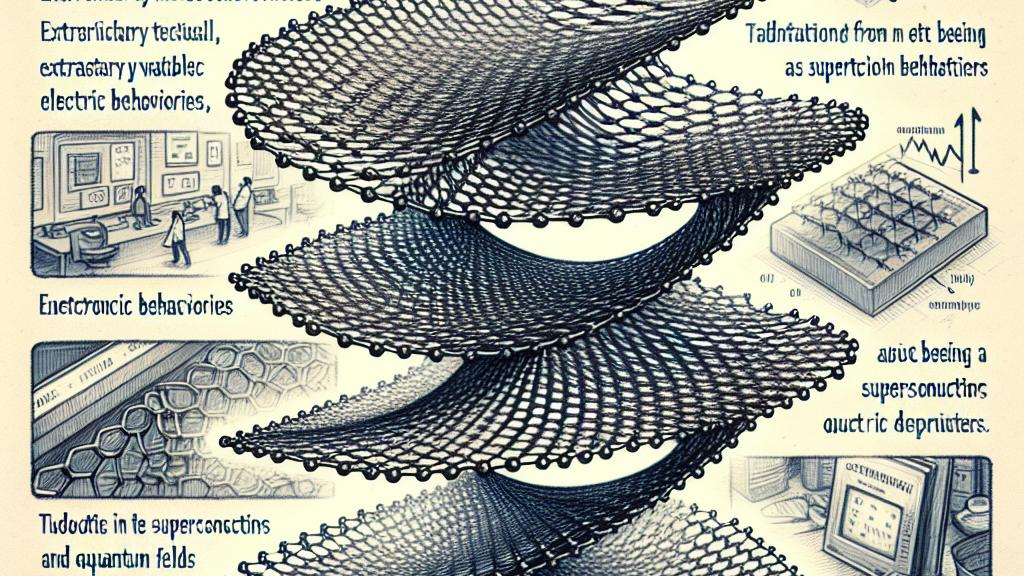Unlocking the Superconducting Potential of Twisted Bilayer Graphene
Overview
- Twisted bilayer graphene unveils revolutionary insights into the realm of superconductivity.
- Cornell University's groundbreaking research pinpointed its maximum superconducting temperature at an impressive 60 Kelvin.
- Tailoring its unique characteristics holds the promise of transformative impacts across technology and energy sectors.

Understanding Twisted Bilayer Graphene
Imagine two exquisite sheets of graphene, carefully stacked and twisted just right—a precise angle of about 1.1 degrees. This fascinating structure, known as twisted bilayer graphene, showcases remarkable electronic behaviors that spark curiosity and innovation in the scientific community. When manipulated through electric fields, it can seamlessly transition between being a superconductor and an insulator, which is akin to having a multi-functional tool at your disposal. This dynamic capability highlights its potential application in future technologies, including flexible electronics, energy storage systems, and even quantum computing. The versatility of twisted bilayer graphene could redefine how we approach materials science.
Significance of the 60 Kelvin Finding
One of the most striking outcomes of this research is the identification of the highest superconducting temperature for twisted bilayer graphene, a remarkable 60 Kelvin. To put this into perspective, consider traditional superconductors—like lead—that require much colder environments to achieve similar states. Achieving superconductivity at 60 Kelvin is not just a milestone; it symbolizes a leap forward that expands possibilities for practical applications. The precision of this finding aids our understanding of the essential mechanisms of superconductivity; it tantalizingly suggests that higher temperature superconductivity could become a reality. With the potential for applications ranging from lossless energy transmission to advanced magnetic levitation technologies, the excitement surrounding this discovery resonates powerfully in the scientific community.
Future Directions in Superconductivity Research
Looking ahead, the implications of this groundbreaking discovery stretch far beyond twisted bilayer graphene itself. Armed with new theoretical frameworks, researchers are eager to explore a wealth of two-dimensional materials that may reveal unprecedented superconducting behaviors. Imagine a world where materials can operate at or near room temperature; this could usher in a new era of superconductors, drastically reducing energy loss in everyday use. Think about it: cities powered seamlessly with minimal waste, advanced magnetic levitation trains that transform transportation, and breakthrough technologies that reshape energy efficiency and consumption. Each new finding not only deepens our understanding of superconductivity but also fuels the fire of innovation. As scientists continue refining their techniques, we stand at the threshold of revolutionary advancements that might one day redefine our technological landscape, connecting the dots toward a bright, energy-efficient future.

Loading...